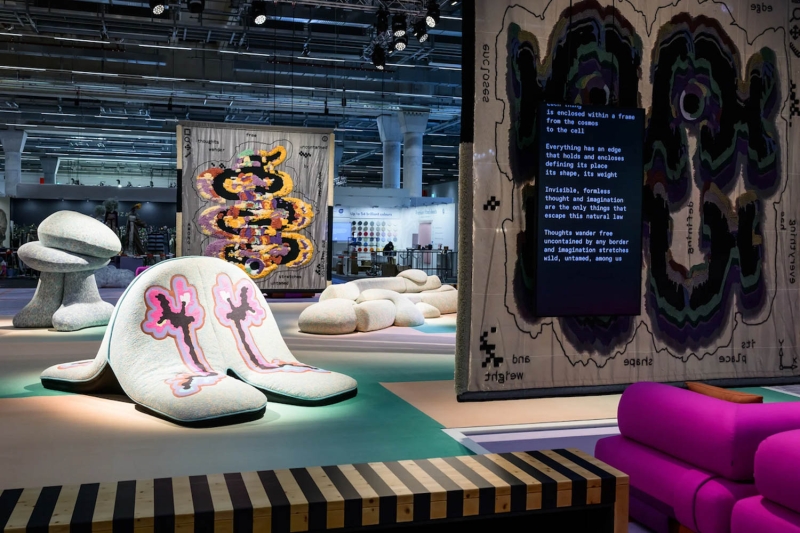Contents
- 1 Discover These Textile Innovations From Heimtextil 2025
- 1.1 Regenerative by Antonio Salgado
- 1.2 Origin by Monteiro Fabrics
- 1.3 312988 by Danzo
- 1.4 Radically Restructured by A Grupé
- 1.5 Sensus by Gebrüder Munzert
- 1.6 Naturally Uneven by Libeco
- 1.7 Among Us by Patricia Urquiola featuring Mushmoster Moroso by Polimex
- 1.8 Trevira CS by Tessitura Gerosa
- 1.9 T-MARVK 19070 Col. 60630 by PIF
Photography by Pietro Sutera/Courtesy of Messe Frankfurt/Heimtextil.
Alcova, the design platform that attracts a huge following to derelict spaces at Milan Design Week, and star Spanish architect and designer Patricia Urquiola both made a mark in Frankfurt this month, with large-scale installations highlighting textile innovations at Heimtextil, which went from January 14 – 17. The 2025 edition of the home and contract textile tradeshow drew more than 50,000 buyers with a roster of international exhibitors totaling over 3,000.
Alcova curated this year’s trend installation, themed “Future Continuous.” Designed by architecture and research studio Space Caviar with a visual identity by creative firm Studio Vedèt, the installation categorized the latest textile trends into three key themes: Regenerative, Radically Restructured, and Naturally Uneven. With a futuristic touch, artificial intelligence brought the textile to life, with fabric swatches propelled by both robots and a ceiling-mounted conveyor belt. A bouncy, highly cushioned floor also provided a tactile reprieve for visitors exploring textiles in the immersive “Among Us” installation by Urquiola, a nod to the popular video game.
From textiles crafted from pineapple fibers and olive pits to a towering upholstered mushroom and a flame-retardant, wool-like material, these are nine of our favorite discoveries from Heimtextil 2025.
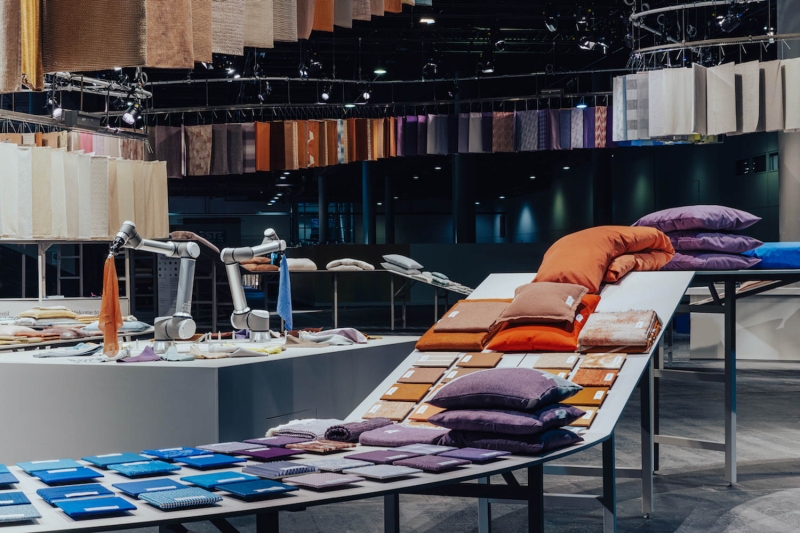
“Future Continuous,” a trend installation curated by Alcova. Photography by Piergiorgio Sorgetti.
Discover These Textile Innovations From Heimtextil 2025
Regenerative by Antonio Salgado
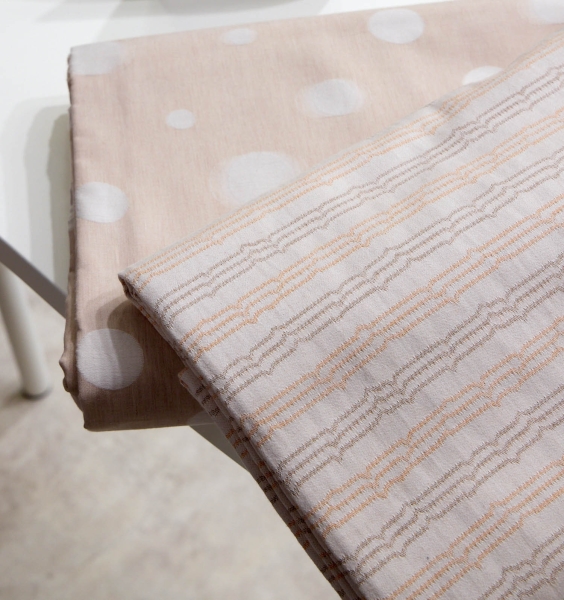
Photography by Jean-Luc Valentin/courtesy of Heimtextil.
Unexpected materials took center stage in the “Regenerative” section of Alcova’s trend installation. Antonio Salgado extracts material from discarded pineapple leaves to produce the stonewashed Kampen, which is 90 percent cotton and 10 percent pineapple fiber. Leather-like in texture, pineapple fiber is easy to dye, and the resulting textile is sound absorbing, hardy, and biodegradable.
Origin by Monteiro Fabrics
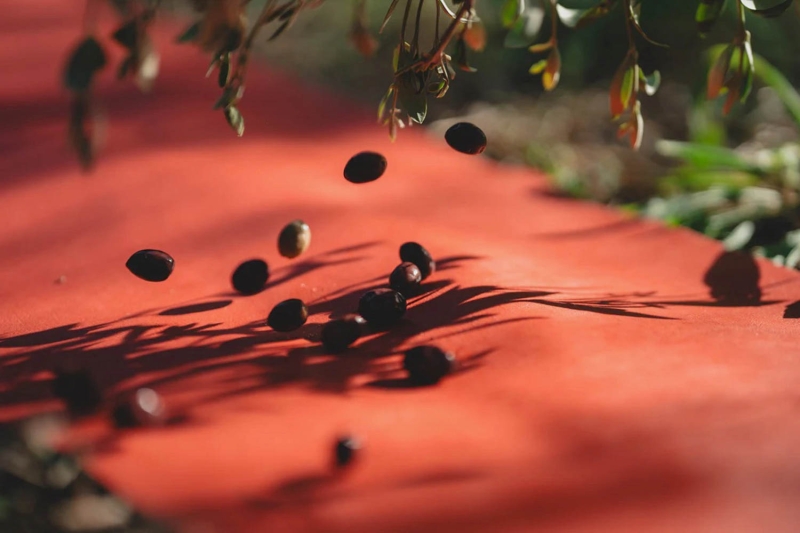
Photography courtesy of Monteiro Fabrics.
A mixture of olive pits, sugar production residue, and cotton paired with polyurethane form the Origin collection from Monteiro Fabrics, a 72 percent bio-based textile repurposing industrial waste.
312988 by Danzo
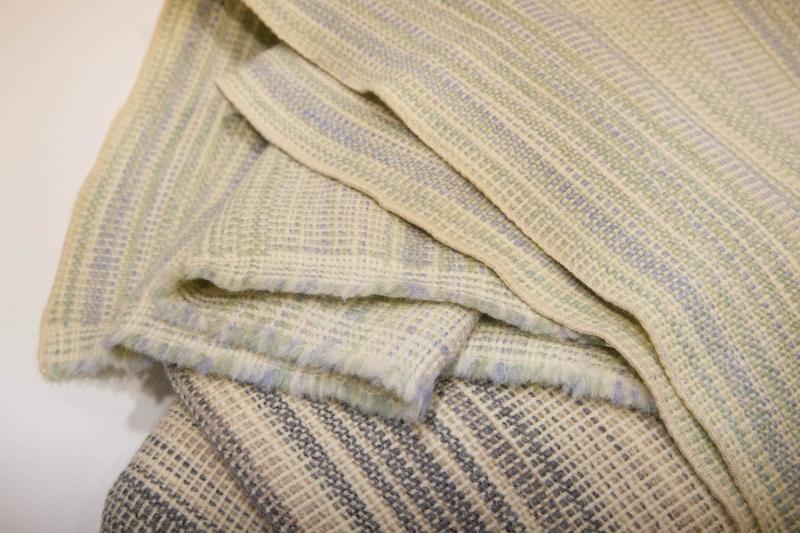
Photography by Jean-Luc Valentin/courtesy of Heimtextil.
Not to be overlooked, wool, the oldest known European textile, is also regenerative. An artfully faded stripe, 312988, from Italian manufacturer Danzo, is fabricated from 100 percent sheep wool.
Radically Restructured by A Grupé
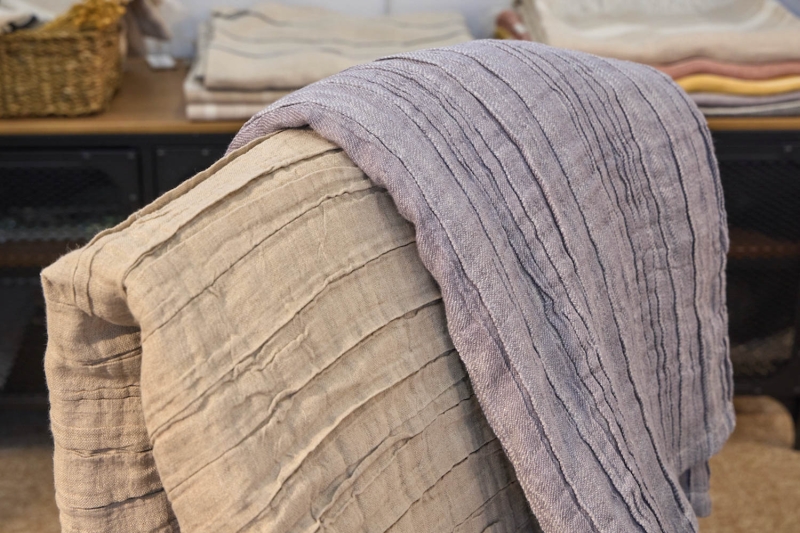
Photography by Jean-Luc Valentin/courtesy of Heimtextil.
Unexpected surfaces drew the eye in the “Radically Restructured” section of Alcova’s trend installation. Lithuanian manufacturer A Grupe presented a 100 percent linen fabric which is deliberately crumpled.
Sensus by Gebrüder Munzert
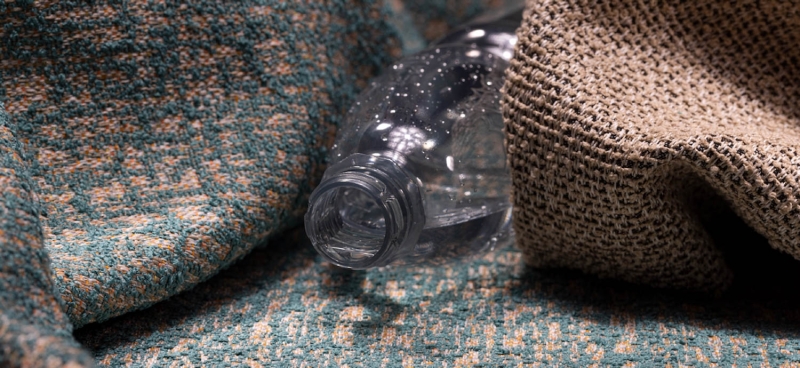
Photography courtesy of Gebrüder Munzert.
The polyester Sensus collection from German manufacturer Gebrüder Munzert is made of up to 100 percent recycled post-consumer material.
Naturally Uneven by Libeco
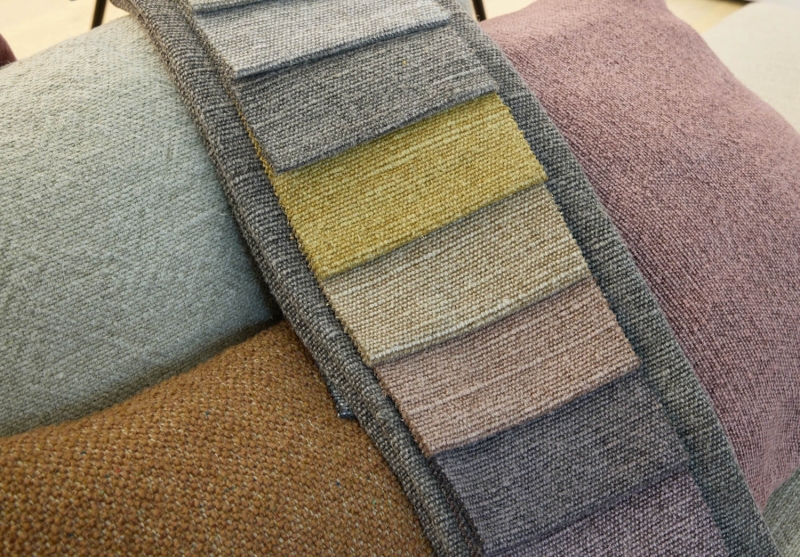
Photography by Jean-Luc Valentin/courtesy of Heimtextil.
Alcova’s “Naturally Uneven” toasted the imperfections which encourage another look at society’s definition of beauty. Natural striations only add to the allure of the 100 percent hemp L 121 GINGER SNAP-3111 from Belgian manufacturer Libeco.
Among Us by Patricia Urquiola featuring Mushmoster Moroso by Polimex
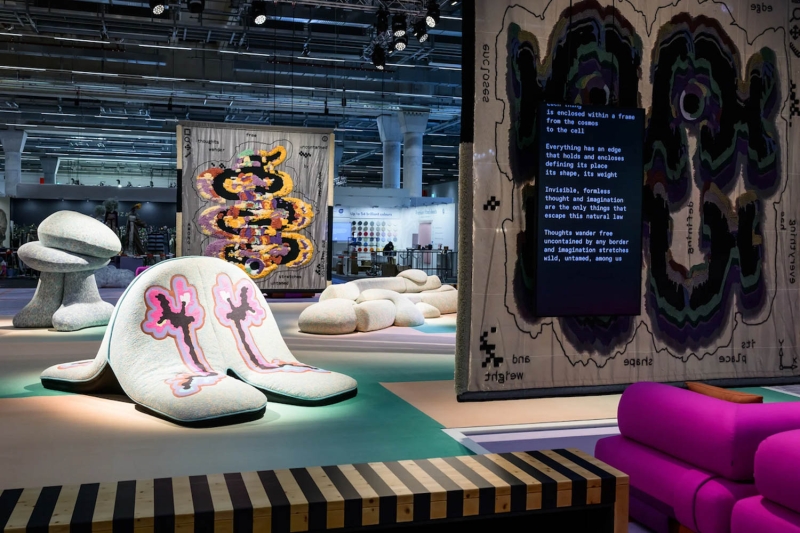
Photography by Pietro Sutera/Courtesy of Messe Frankfurt/Heimtextil.
Towering almost seven feet in Patricia Urquiola’s “Among Us” installation, a padded sculpture dubbed ‘Mushmonster Moroso’ was a nod to a giant fungus. The sculpture was upholstered with Polimex, a fabric printed using 90 percent less water and 80 percent greenhouse gas emissions, according to the manufacturer, when compared to traditional production processes.
Trevira CS by Tessitura Gerosa
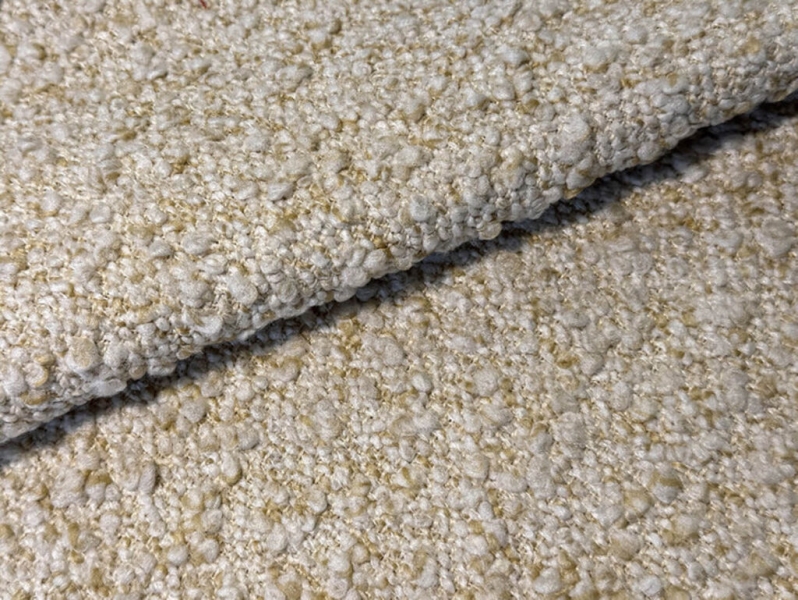
Photography copyright Indorama Ventures.
A winner in the 2025 Trevira CS fabric competition using flame retardant Trevira CS fabric, C5414/362 from Italian manufacturer Tessitura Gerosa is an irregular bouclé which feels like wool yet easily moves from indoors to out.
T-MARVK 19070 Col. 60630 by PIF
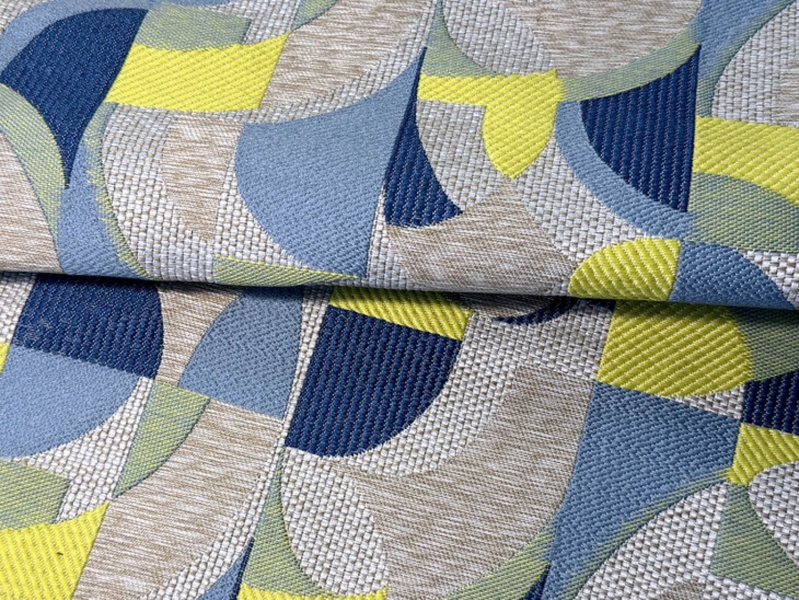
Photography copyright Indorama Ventures.
Another winner in the Trevira competition, T-MARVEK 19070 Col. 60630 is a playful jacquard from Moroccan manufacturer PIF. Likewise, UV resistance allows the material to be applied in settings both indoors and out for furnishings such as seating.

